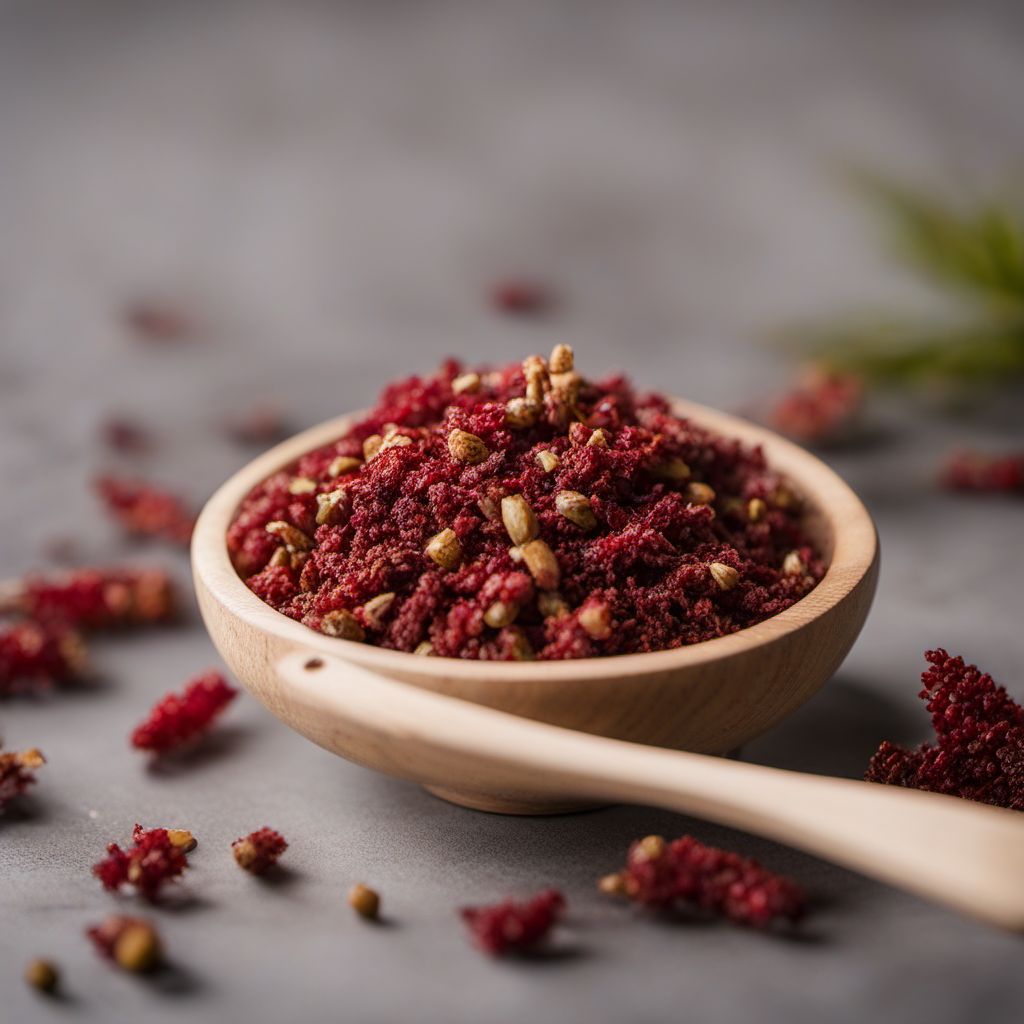
Ingredient
Fragrant sumac (infusion bark)
The Aromatic Essence: Fragrant Sumac
Fragrant sumac, or infusion bark, is a reddish-brown spice derived from the bark of the sumac shrub. It has a tangy, lemony flavor with hints of citrus and a slightly sweet undertone. The texture of the spice is coarse and powdery, similar to ground cinnamon. Its appearance is characterized by its deep reddish-brown color, which adds a vibrant touch to dishes.
Origins and history
Fragrant sumac has a rich history and cultural significance, particularly in Native American cuisine. It has been used for centuries as a seasoning and medicinal herb. Native American tribes utilized the bark for its aromatic properties and as a natural remedy for various ailments. Fragrant sumac is native to North America and grows abundantly in regions with well-drained soil and ample sunlight.
Nutritional information
Fragrant sumac is a good source of antioxidants and is rich in vitamins C and A. It also contains minerals such as calcium, potassium, and magnesium. With only a few calories per serving, it is a flavorful and nutritious addition to meals.
Allergens
There are no known allergens associated with fragrant sumac (infusion bark).
How to select
When selecting fragrant sumac, look for a deep reddish-brown color and a strong, aromatic scent. Avoid any signs of moisture or mold. Opt for reputable brands or suppliers to ensure quality and freshness.
Storage recommendations
To maintain the freshness and quality of fragrant sumac, store it in an airtight container in a cool, dry place away from direct sunlight. Proper storage will help preserve its aroma and flavor for an extended period.
How to produce
Fragrant sumac can be grown by planting sumac shrubs in well-drained soil and providing adequate sunlight. Regular pruning and maintenance are necessary to promote healthy growth and harvest.
Preparation tips
Fragrant sumac can be used as a spice rub for meats, added to marinades, or sprinkled over roasted vegetables for a tangy and aromatic twist. It can also be infused in oils or vinegar to create flavorful dressings or dips. Additionally, fragrant sumac can be used as a substitute for lemon zest in various recipes.
Culinary uses
Fragrant sumac is commonly used in Middle Eastern, Mediterranean, and Native American cuisines. It is often incorporated into dishes such as kebabs, roasted meats, salads, and marinades to add a tangy and citrusy flavor. It is also used in spice blends and rubs for grilled or roasted dishes.
Availability
Fragrant sumac is commonly available in North America, particularly in regions where the sumac shrub is native. It can also be found in specialty stores or online retailers that offer a wide range of spices and culinary ingredients.
More ingredients from this category » Browse all

Parsley (infusion fruits)
The Versatile Herb: Unveiling the Infusion Fruits of Parsley
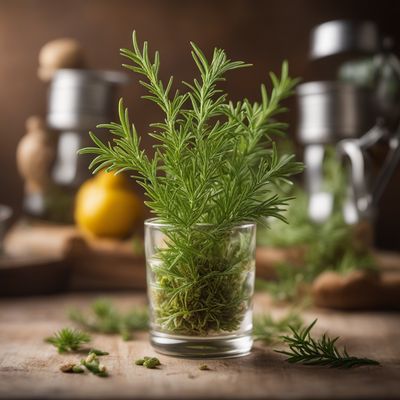
Fir (infusion shoots)
Exploring the Aromatic World of Fir Infusion Shoots

Juniper (infusion bark, wood, shoots)
Exploring the Essence of Juniper: From Bark to Shoots

Purging cassia (infusion fruits)
The Detoxifying Spice: Purging Cassia

Horse-chestnut (infusion seeds, bark)
The Majestic Remedy

Wild angelica (infusion fruits)
The Enchanting Infusion Fruits of Wild Angelica

Lapacho (infusion bark)
The Healing Elixir from the Forest

Quassia (infusion bark, wood)
Bitter Elixir from Nature's Pharmacy
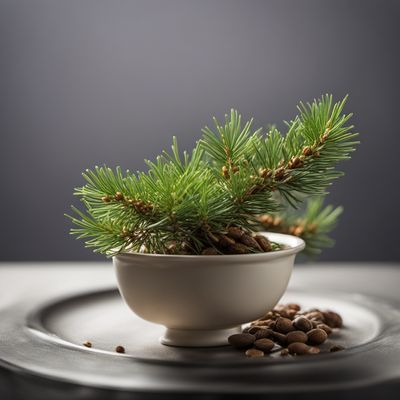
Dwarf mountain pine (infusion shoots)
The Aromatic Essence of Dwarf Mountain Pine
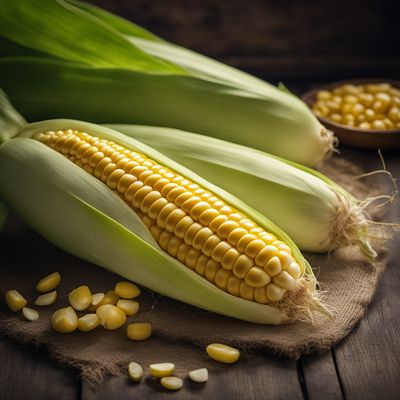
Sweet corn (stigmas styles)
The Golden Threads: Sweet Corn Stigmas Styles

Chamomile (infusion seeds)
"The Soothing Elixir: Unveiling the Magic of Chamomile Infusion Seeds"

Guarana (infusion seeds)
The Energizing Amazonian Seed
Recipes using Fragrant sumac (infusion bark) » Browse all

Syrian-inspired Bandera Damascena
A Taste of Damascus: Syrian-inspired Bandera Damascena

Turkish-style Folar de Olhão
Savory Turkish Easter Bread: A Fusion of Flavors

Adana Kebap with Spicy Grilled Meat Skewers
Flame-Grilled Delight: Spicy Adana Kebap Recipe
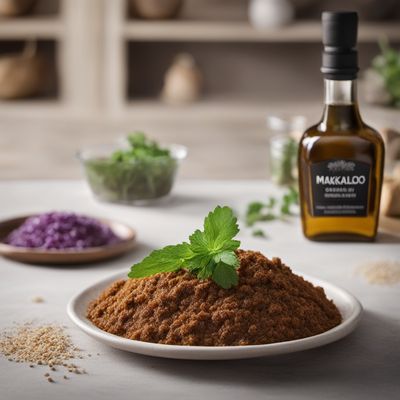
Makalo with a Jordanian Twist
Spiced Potato Mash with Middle Eastern Flavors

Turkish-style Som u Vinu (Fish in Wine)
Sultan's Delight: Turkish-style Fish in Wine

Turkish-Style Tripes with Spices and Herbs
Savory Turkish Tripes Delight

Turkish-style Feijoada
A Turkish Twist on the Classic Brazilian Feijoada

Caspian Sea Delight: Savory Torta de Viana
Caspian Sea Delight: A Fusion of Portuguese and Caspian Flavors

Syrian-inspired Spicy Watercress Salad
Zesty Watercress Delight: A Taste of Syria

Turkish-Style Paella
Istanbul Delight: Turkish-Style Paella
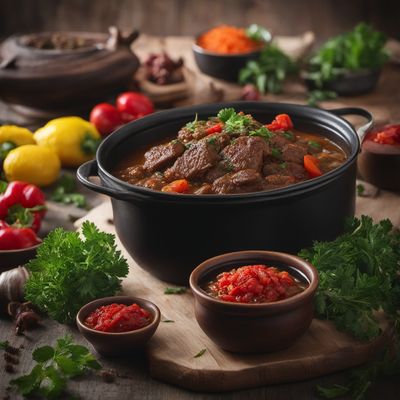
Miyan Kuka with a Jordanian Twist
Jordanian Kuka Delight: A Fusion of Nigerian and Jordanian Flavors
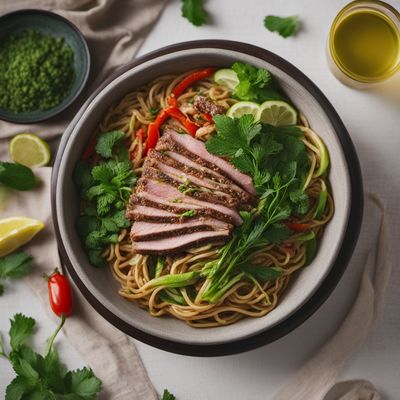
Lebanese-inspired Toshikoshi Soba
Savory Lebanese Soba Delight